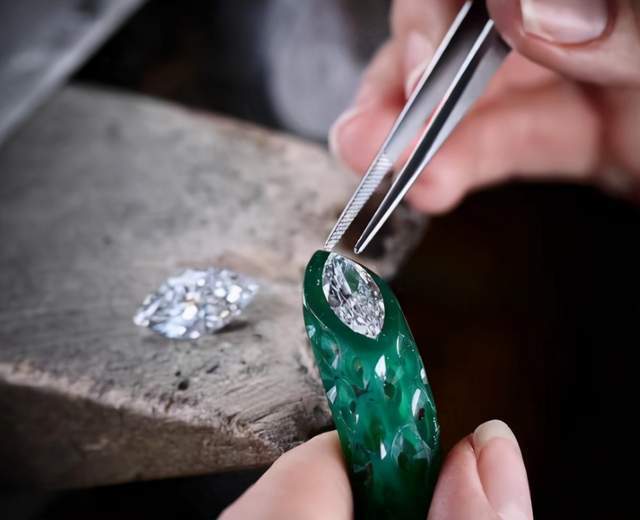
In an industry traditionally defined by “take-make-dispose,” the concept of a closed-loop economy—where resources are reused indefinitely, and waste is eliminated—represents a radical shift toward sustainability. When jewelry recycling and synthetic gemstones join forces, this vision becomes a tangible reality. Together, they transform old jewelry into new treasures, minimize reliance on finite natural resources, and redefine the jewelry lifecycle. Let’s explore how this partnership is creating a circular system that benefits both the planet and consumers.
The Flaws in the Traditional Linear Model
For decades, the jewelry industry operated on a linear economy:
- Extraction: Mines deplete Earth’s crust for precious metals (gold, silver, platinum) and natural gemstones, causing environmental harm (as discussed in our previous blog).
- Production: Raw materials are shaped into jewelry, often with energy-intensive processes and significant waste (e.g., 15-20% of metal is lost during casting).
- Disposal: Broken, outdated, or unworn jewelry is either stored indefinitely or discarded, locking away valuable resources in landfills.
This model is inherently unsustainable. But by embracing recycling and synthetic gems, we can close the loop, turning waste into value at every stage.
How Jewelry Recycling Powers the Closed Loop
1. Metal Recycling: From Waste to Worth
- Process: Old jewelry is melted down, impurities are removed via electrolysis or chemical refining, and pure metals (e.g., 18k gold, sterling silver) are reused.
-
Impact:
- Energy Savings: Recycling gold uses 95% less energy than mining new gold, cutting carbon emissions by the same proportion.
- Resource Conservation: The U.S. alone could recover $11 billion worth of gold from existing jewelry and electronics, reducing demand for virgin mining.
- Consumer Role: Brands now offer jewelry buyback programs, allowing customers to trade in old pieces for store credit or custom designs, incentivizing circularity.
2. Gemstone Reuse & Recycling
- Natural gems from vintage jewelry can be cleaned, recut, or reset into new designs, extending their lifecycle.
- Even damaged stones (cracks, chips) can inspire creativity—think mosaic jewelry or artful asymmetrical settings, turning “flaws” into features.

Synthetic Gemstones: The Missing Piece of the Circular Puzzle
While metal recycling has gained traction, gemstones have historically posed a challenge. Synthetic gems solve this by:
1. Eliminating the Need for New Mining
- Lab-grown gems use recycled metals (from old jewelry) for settings and sustainable inputs for gem growth (e.g., carbon for diamonds, aluminum oxide for sapphires), creating a fully circular material flow.
- Example: A brand might melt down a customer’s old gold ring, cast it into a new band, and pair it with a lab-grown diamond grown from carbon sourced from industrial waste, not mines.
2. Enabling Infinite Recycling
- Synthetic gems are chemically identical to natural ones, meaning they can be recycled, reset, or repurposed alongside recycled metals, with no degradation in quality.
- Unlike mined gems, which are finite and often discarded during mining or cutting, lab-grown gems are produced with zero waste (excess materials are reused in new growth cycles).
3. Closing the Loop on Design Innovation
- Designers can experiment with bold, sustainable creations knowing that every element—metal and gem—has a low-impact origin. For instance, a necklace might feature:
- Recycled silver (from old tea sets or computer parts)
- Lab-grown emeralds (created from recycled mineral compounds)
- Reclaimed diamonds (from heirloom jewelry, refurbished and reset)
The Benefits of a Closed-Loop Jewelry System
1. Environmental Wins
- Reduced Emissions: Combining recycled metals (95% less energy) with lab-grown gems (80% less carbon than mined) creates jewelry with a 90% smaller carbon footprint than traditional pieces.
- Preserved Ecosystems: No new mines mean no deforestation, water pollution, or habitat loss, protecting biodiversity hotspots like the Congo Basin (a major source of natural diamonds and coltan).
2. Economic & Ethical Advantages
- Cost Efficiency: Recycled metals and lab-grown gems are often 30-50% more affordable than their mined counterparts, making sustainable jewelry accessible to wider audiences.
- Transparent Ethics: Brands can provide full supply chain visibility, reassuring consumers that their purchase avoids conflict minerals, unethical labor, and environmental harm.
3. Cultural Shift
- By valuing “old” as much as “new,” the industry encourages a mindset of conscious consumption—where jewelry is seen as a renewable asset, not a disposable luxury.
Overcoming Challenges: Making the Loop Truly Closed
While progress is promising, hurdles remain:
- Consumer Awareness: Many still don’t know their old jewelry can be recycled or that lab-grown gems are identical to natural ones. Education (via blogs, infographics, in-store workshops) is key.
- Infrastructure: More regional recycling facilities and lab-grown gem producers are needed to reduce transportation emissions and support local circular economies.
- Regulatory Standards: Clear labeling (e.g., “100% recycled metal” or “lab-grown diamond”) helps build trust and prevent greenwashing.
The Future is Circular (and Sparkling)
Jewelry recycling and synthetic gemstones aren’t just trends; they’re the foundation of a new industry paradigm where beauty and responsibility go hand in hand. By embracing the closed-loop economy, we can create a world where every necklace, ring, or bracelet tells a story of renewal—not exploitation. 🌍✨